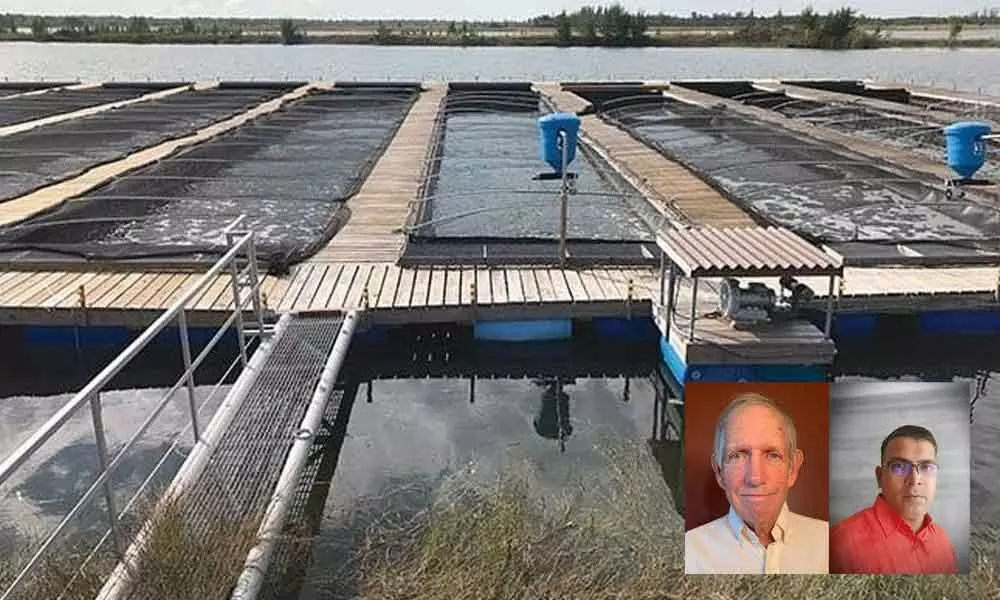Jharkhand farmer adopts US fishing tech with aplomb
The system is simple, of low cost, and both financially and environmentally sustainable
image for illustrative purpose

New Delhi: EVEN as the government is focusing on increasing the farmers' income, a farmer in India's mineral rich eastern state of Jharkhand is all set to become the first in the country to adopt the "floating raceway technology" of the United States for fishing in existing open ponds.
The new technology for the existing pond fishing has been brought to India by a journalist turned entrepreneur Arvind Dubey, based in Mumbai through his company Superior Aquaculture India Pvt Ltd.
Dubey said that the new technology is being implemented by Sadanand Verma and Subodh Prakash, both residents of Jharkhand's Giridih.
He said by the month of the August this year, this new system will be installed in the ponds in Giridih.
Explaining the new fishing system, which is called floating raceways (IPRS), Dubey said that for using the new technology a farmer does not need to dig a new pond, as it can be done in the existing pond.
Dubey said that the prime source of the system's aeration is the pond-water interface coupled with the oxygen production by the pond's flora, primarily algae.
Explaining the technology, Dubey said that Superior Aquaculture uniquely offers a Superior Floating Raceway System (patented) that can perform all of the standard RAS or Biofloc functions (except perfect temperature control) but in a pond or other waterway.
"The huge volume of water in our systems provides a very forgiving and non-volatile water reserve that continuously flows through the raceway. The system is simple, of low cost, and both financially and environmentally sustainable," he said.
He explained that it is listed as a best management practice in North America, and Returns on Investments (ROIs) can often be achieved in less than two years.
Dubey also said that powered by the sun and wind, the system's pond water is naturally aerated and automatically treated for ammonia.
"Soluble nutrients and carbon dioxide are absorbed by the algae and used to produce omega-3, oxygen and nutritious food. The phytoplankton are then consumed by the zooplankton, and the nutrient laden zooplankton are like a super healthy candy for the fish," he said.
Jay Warecki, who had developed this technology told IANS, "As there is lot of wastage in fishing today, so we have been able to put the components together for aquaculture which is very simple.
He said simplicity and being bio friendly is important as we all live together in tighter places with less water that we had 50 years ago. "And it is important that we use that in fishing by saving water. So that is the essence of the programme to be able to present inexpensive solution for the water quality issues that are faced by the aqua culture farmers in places like India, US, Vietnam and Africa," he said.
He said that solids collected in the raceway's settling zone have their own well-established value, but can sometimes be "pressed" for enough algae oil to provide 100 per cent of the farm's energy needs --all from the sun.
"In cases where the host water body might contain higher levels of algae than desired, additional auxiliary equipment such as rotating drum filters, can easily be added," he said.

